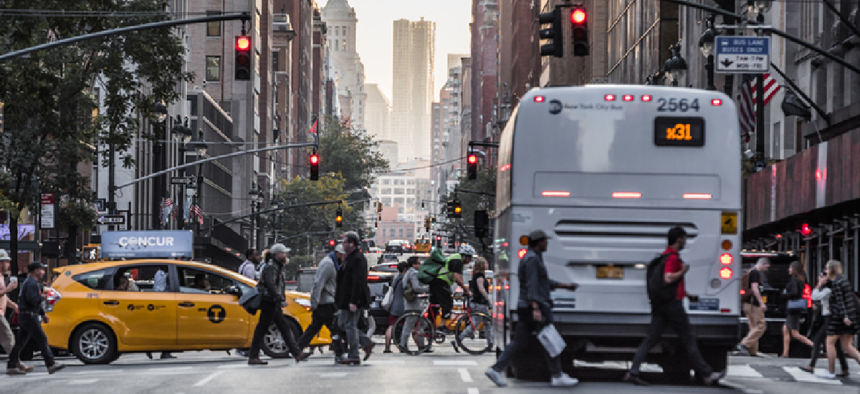Building smart cities starts with safety and mobility


Connecting state and local government leaders
Traffic safety and mobility systems can collect and analyze data that helps enforce speed limits, spot vehicles flagged by police and alleviate congestion.
Every day, cities are growing smarter, more automated and more connected. They are also becoming more densely populated. As government transportation and IT officials make the case for enabling smart cities of the future, they will need both data and funds to make these meccas happen.
Transportation safety and mobility solutions can help cities highlight the benefits of smart city infrastructure:
- Traffic safety solutions can detect and collect the evidence needed to enforce speed limits and traffic laws, thereby decreasing the dangerous driving behavior and saving lives.
- Public safety solutions can spot flagged vehicles and help law enforcement catch criminals at large.
- Smart mobility solutions provide traffic flow assistance along with data points that include vehicle counts, speed, classification and lane usage.
Implementing technology for improved safety and mobility requires a few components, including cameras and a video-based solution to capture license plates on moving vehicles, also known as automated license plate recognition. When these low-latency video camera solutions are implemented on roadsides to assist with public safety, they capture the license plate data and then in seconds transmit it to a back-office computer system where algorithms can quickly match plates against national and regional watch lists. These lists might be Amber Alerts or Silver Alerts for missing persons, or reports of stolen cars and vehicles belonging to people of interest and sexual predators, for example. Depending on the type of monitoring protocols in place, the system can immediately send an alert of a flagged vehicle to 911, police dispatch or other public entity, saving police departments time and money.
The same type video camera solutions can be placed at intersections to capture red-light violations, in school zones to capture speeding violations and on school buses to capture vehicles not yielding to school bus stop signs. By enforcing traffic laws, cities, counties and school districts can make their communities safer. Reducing the number of collisions reduces the time and money spent by municipalities, emergency services, courts and insurance agencies to rectify and prosecute traffic collisions. Proceeds from road safety camera programs can also contribute to the funding needed for smart city enablement and infrastructure improvements.
Lastly, video camera technology can be leveraged to improve mobility in densely populated cities dealing with traffic congestion. Cameras placed at intersections or in bus lanes capture data on the movement of people and vehicles on the roadways that traffic engineers can then use to make informed decisions on optimizing traffic flow and improving safety. Data that can identify rush hour traffic patterns, as well as the number and kinds of vehicles that move throughout the city, can inform long-term transportation strategies, such as the installation of roundabouts, designated bus lanes and bike lanes and limits on commercial vehicles on specified roadways at certain times of the day.
The future of smart transportation
As cities become increasingly smarter, transportation technology must keep pace. Cities will need more actionable data to use in faster decision-making and transportation infrastructure changes. Open architectures will enable that data to be quickly and securely shared and fed into a network of government systems for use in public safety, traffic safety and improved mobility.
Soon, the months and years currently needed to efficiently time traffic signals will be done in real time and adjust dynamically with the flow of traffic. And in the near future, open application programming interfaces will be built and shared with traffic monitoring centers for a plentitude of real-time applications, such as automated alerts to first responders, signal timing or information sharing with autonomous vehicles.

NEXT STORY: How cities and counties are approaching 'smart' purchasing




